13 Mar Why the GODOX V series Speedlites are perfect for Flash Macro photography
Macro Photography with Flash
If you want to take great macro photos of live, moving specimens, like insects or spiders, there is one essential component, an absolute must-have, that will bring your photos to a new level: the Speedlite / Flash.
Why is a flash so important?
There are some challenges when it comes to photographing small, live specimens.
Movement
Do not get me wrong, you can shoot wonderful macro photos without ever using a flash. It all depends on the subjects you are photographing, the situation you and them are in, and your esthetic approach.
Get up early in the morning and you can find butterflies and countless other insects sleeping.
You can setup a tripod and take beautiful photos with available light. Even focus stacking is possible if subject and camera are completely still.
But what if the wind blows, or even more challenging, the subject is moving?
Maybe it is a tiny spider, that is frantically running around, in leaf litter, with bad lighting conditions. There is no chance to get such a photo with your camera on a tripod.
It will most probably not even be close to being a sharp photo.
The solution to this dilemma is using a flash.
Macro photography with flash has several advantages.
Besides being more flexible with an on-camera flash, it enables you to get tack sharp photos of moving subjects.
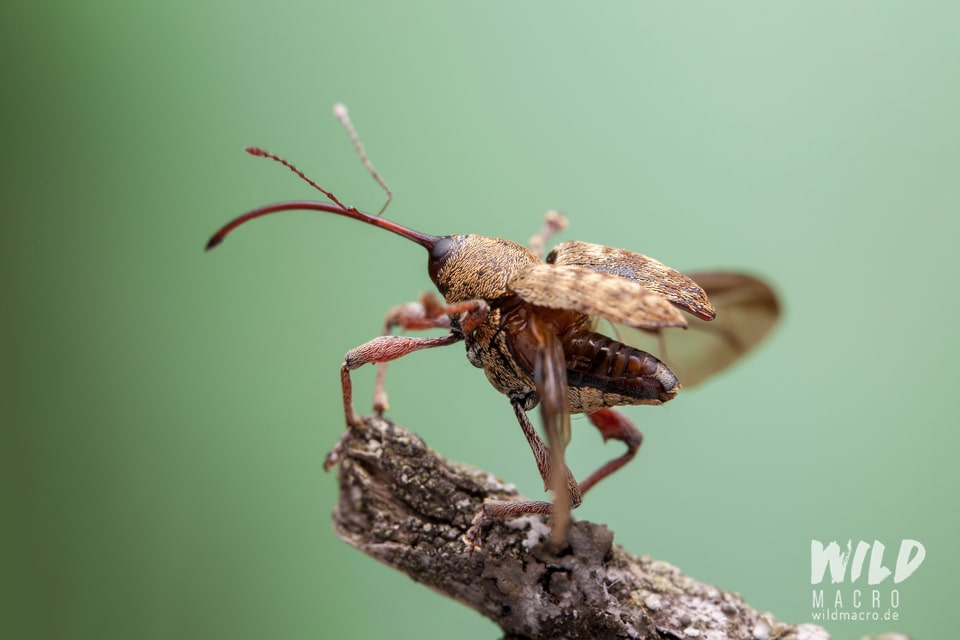
The burn time of the flash is so short, that it literally freezes motion.
You will be able to photograph any moving insect or spider in almost any situation and focus on composition and other aspects instead.
Even a shaky hand will not result in an unsharp image, as the burn time is just too short for this to affect the shot.
If there is one ingredient for tack sharp macro photos of live specimens, then it is using a flash.
You can find an article about Macro Photography with Flash here, soon.
Lighting
Another important aspect of macro photography is the lighting.
I have mentioned bad lighting conditions in the ‘movement’ section already, but let us see why a flash can improve these conditions.
If you are aiming for an all-natural look in your macro photography, then using only available light is probably the way to go.
But that does not mean it is always the best choice. There will be lighting scenarios where you will simply not get a good photo with only available light.
Using a flash for mixed lighting would be an option – for example lighting a butterfly with your flash, while exposing the whole scene for an available light sunrise.
This will work particularly well for static scenes. It will, however, not work with fast moving subjects, as the scene is constantly changing.
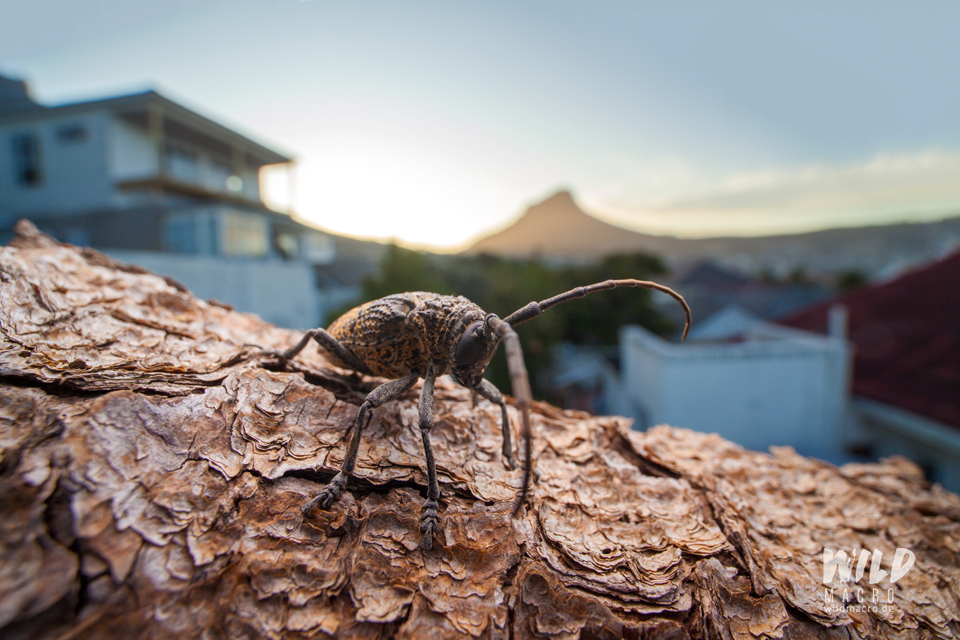
Insects and spiders are difficult to predict and you will often encounter them in challenging lighting scenarios, hidden in cracks, rushing to their hide-outs, sitting in places where the sun literally never shines.
The only solution to get these photos is using a flash.
You simply bring your own fixed lighting scenario with you, wherever you aim your camera – sharp photos guaranteed (as long as you get your focus right).
Add a professional diffuser for soft lighting to the setup and your photos will not even look like a typical photo taken with flash.
Requirements for a flash used for Macro photography
To be honest, using a speedlite can, and most probably will, enhance your photos a lot, but it is integral to also have an effective diffuser to produce even and smooth lighting on your subject.
Features of a good flash for macro photography would be – at least for me:
- compact size
- high power output (although most of the time you will want to dial the power down a lot)
- fast recycle time
- easy menu / manual mode
- focusing light / modelling lamp
For focus stacking it is important for the speedlite to have a short recycle time and to provide a continuous power output, which mainly depends on the batteries used.
While standard batteries will provide less power the closer they get to their end-of-life, there are some rechargeable batteries that manage to provide a relatively stable power output throughout their cycle.
I have used sets of eneloop rechargeable batteries in all kinds of speedlites for a long time and they have always been my favorites!
The GODOX V series Flashes
That was until I bought a GODOX V860 II and realized their chargeable Li-ion batteries were even more effective.
Since then I have been a loyal user of GODOX and added the GODOX V1 with its round flash head (for my bigger Canon 5DII FF Setup) and the very compact GODOX V350 (for my Olympus OM-D EM-1 III MFT Setup) to my gear.
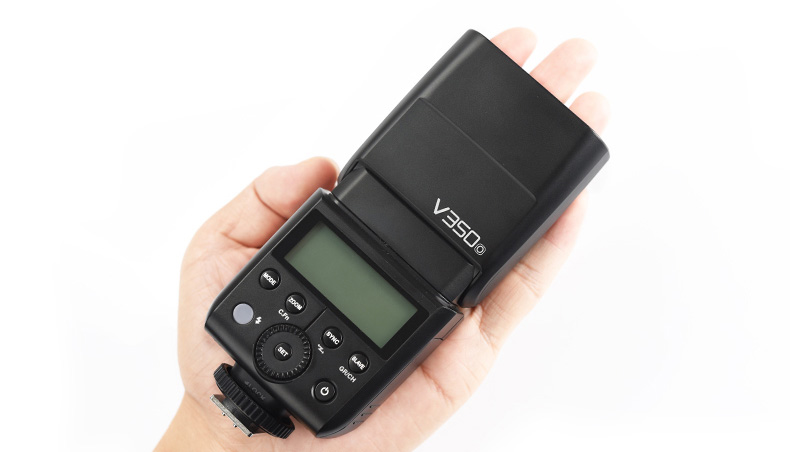
The Godox V flashes combine a lot of innovative and helpful features, some integrated in all the flashes and some being a key feature of a specific model.
From a magnetic accessory kit to a quick-lock and a modelling lamp – these flashes have been designed very thoughtful and focus on actual usability and intended use.
While GODOX is known for producing both quality and innovation, which shows in the many features of their products, the chargeable Li-ion battery is a common feature of the V series.
In my opinion this is a first-mover advantage when it comes to on-camera flashes.
The many benefits of this battery make the V series Flashes the perfect choice for Macro Photography.
Why do i like the battery of the GODOX V series Flashes so much?
No more fiddling and fumbling 4 batteries in the flash.
You just need one single battery now.
The V1 and the V860III do not even have a battery cover: the battery itself seals the flash.
A button releases the battery and inserting it back in place is done within the blink of an eye.
With its latest model, the V860III Godox introduced an upgraded battery, which is also interchangeable with the V1.
That´s what i call customer-friendly and innovative.
Why the GODOX V series Speedlites are perfect for Flash Macro photography
While my favorite feature of the V series is definitely the Li-ion battery, it is the sum of all the many ideas that these models combine.
The handling is easy and they actually improve my workflow by cutting time.
Even if i use a dedicated focusing light for example, it is good to know I can rely on an ob-board modelling lamp whenever i would need it (with the V1 and V860III).
Better safe than sorry – nothing worse than forgetting to bring your focusing light on a nightly field trip and not having an alternative.
Having all these features at a reasonable price and with good quality makes them a choice that is difficult to argue with.
I have not mentioned them all in the article but of course they have a lot more features, like the Godox radio wireless X system (V1), HSS function, USB socket for firmware updates, and many more.
With their moderate price tag compared to the flagship flash models of the common camera brands, it is worth trying the Godox flashes out and let them convince you, too.
* Disclaimer: Product photos of the Godox V Series flashes © Godox



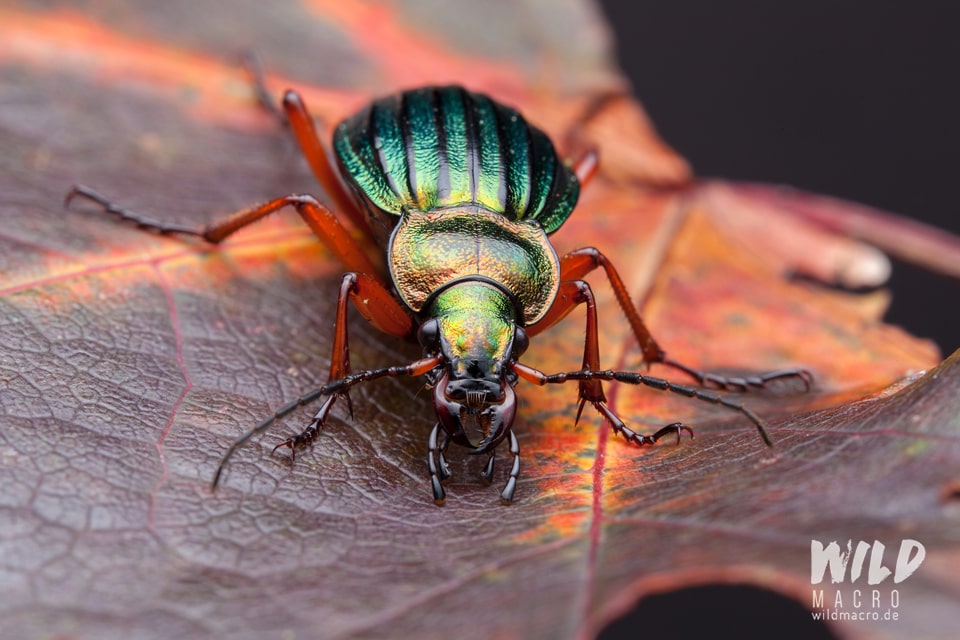
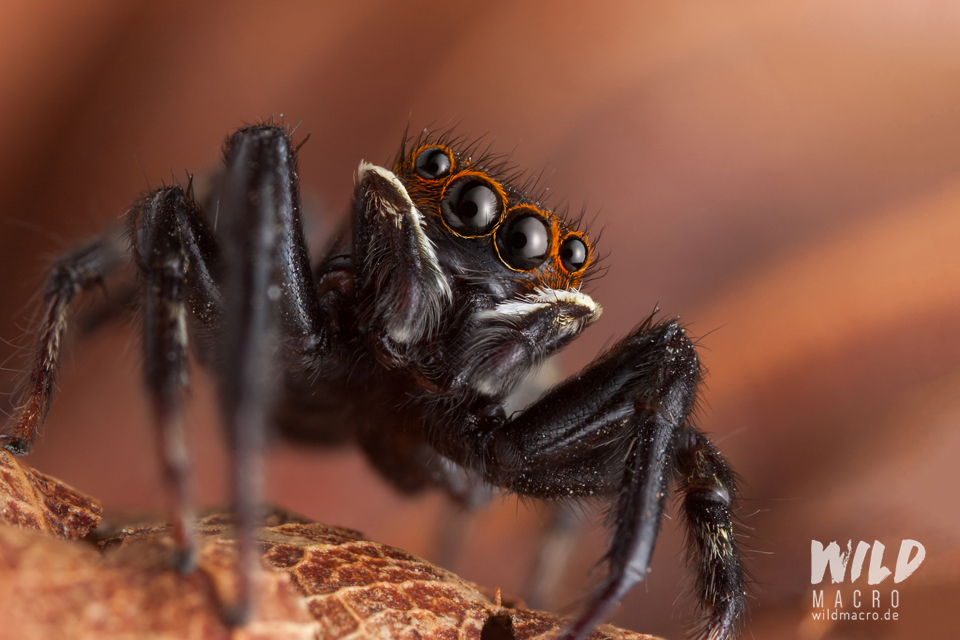
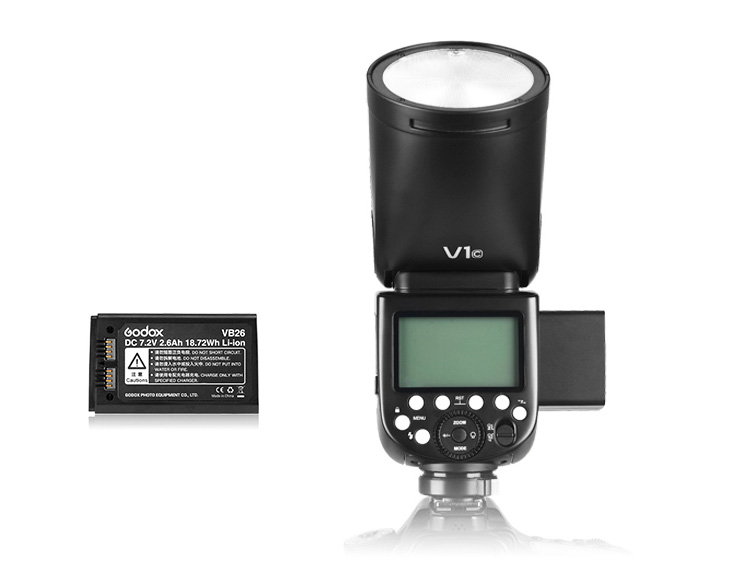


Helen Smith
Posted at 10:54h, 29 SeptemberHi! 2 questions please – how do you focus on a small bug that is running around? And how do you choose the settings for the flash or is it TTL? Thank you
wildmacro-chris
Posted at 19:00h, 19 NovemberHello Helen, excuse the late reply: i use manual focus and move the setup/camera back and forth following the subjects movements and photograph it, when i see/think that the focus is where i want it. Shooting sequences or bursts may help getting a hit, too. As for the flash settings, i only use manual flash settings, which depend on my lens, aperture, diffuser and distance to the subject. I can keep them relatively fixed, though. The lower the flash power, the better, as it helps freeze the subjects motions in the frame.
Justin
Posted at 02:28h, 23 Aprilwhich do you think would be most versatile and ideal for a casual beginner? i worry i might want the festures of the v860iii down the line but i like the compactness of the v350. i cant decide. my d500 with battery grip, 105mm macro lend, and 2x teleconverter already quite heavy too. i still dont have a tripod and also worried about missing shots while trying to get used to the tripod.
wildmacro-chris
Posted at 13:06h, 25 AprilHi Justin, you hit the nail on the head – it is either compactness, low weight and less size for portability and better handling, or the other way round but more power and less worrying for blocking any flashlight with a longer setup. With a big DSLR or even full-frame setup I personally would go for the larger flashes (v860/V1), as the bigger/higher flash gives a better angle to reflect the light towards the front with the help of a diffuser. For a smaller setup the V350 is perfect and it is light and you do not need to bring the light forward as much, as with a DSLR setup. I hope that helps – in the end it always comes back to your personal preferences. You could easily use the 350 on a larger/longer setup but must find a diffuser that is tailored perfectly.
JLU
Posted at 09:14h, 22 SeptemberHi, I am using an OM-1, 60mm M.ZUiko and a V350. I just got the V350 and am trying to get used to it. Could you please share you settings for hh focus stacking? I am shooting in manuel, 1/100 seems the automatic max shutter speed of the OM-1 in focus stacking with a flash, aperture 8ish … When trying to shoot 15 pics of a bug, the flash kind of stutters …. I feels like it is unable to flash 15 times straight. Flash settings are on manual, 1/16th – I tried with and without hss. Shoud I only use a stack of 10 ? Use hss? Or am I missing something?
Thanks for your help, keep up the great work and articles, they really help.
wildmacro-chris
Posted at 09:53h, 22 SeptemberHi Jerry, I´ll gladly try to help but that is not so easy, since i can only guess what is the problem.
As usual, multiple roads lead to rome – so, for a 15 shot focus stack you choose aperture, shutterspeed (which you did) and then try which flash setting gives you the light you need to expose your scene. It might be interesting to know what is your ISO setting, as increasing this slightly, will help your flash need less power and hence recycle faster. I have ISO set at 200 and will sometimes increase to 400 even (you can denoise later in post-processing, if needed, but the OM-1 handles it nicely i´d say). The OM-1 and V350O combination should easily be able to manage a 15 shot stack.
When you set the focus stacking (and also focus bracketing) function in the OM-1 menu, you can choose a flash delay, so you give the flash a bit more time to recycle. I have this set to 0.1.
Do you get black frames when looking at your seperate images later on, or does it just “appear” the flash stutters, becasue yes, sometimes we cannot see every single flash, but that´s an optical illusion as far as my perception goes.
I hope this helps getting closer to solving your problem – please keep me updates if this helped at all.
Good luck with that!
JLU
Posted at 13:03h, 22 SeptemberHi Chris,
I managed to find an answer to one of my questions: the om-1 indeed limites the sspeed to 1/100 when focus stcking with flash.
I tried to use 0.1 flash delay, but my V350 does not contineously shoot the 15 pics – after around 10 shors, there is a delay. Sometimes it picks up with full speed for the remaining shots, sometimes it triggers slower (like 1 flash per sescond). So my problem is not really black images but the speed/frequency of the flash is not consistent. I thought HSS switched on (on the flash) would help, but nope. That is why I wanted to find out what your settings are one the flash and on the camera – maybe I am missing something.
JLU
Posted at 13:04h, 22 SeptemberShooting with ISO 200 btw (for focus stacking).
Mark
Posted at 23:48h, 01 NovemberWhat would be the better option regarding flash for macro? The V350 or the TT350 with battery pack (pb960)? Regarding recycling time and total flashes, but also portability 🙂
wildmacro-chris
Posted at 10:00h, 02 NovemberHello Mark, personally, i would always prefer a most flexible, portable, compact and lightweight solution, whenever i am actively walking in the field. For studio work this is a completely different game. To answer your question: i would choose the V350 option and doubt you will be able to drain the battery in a macro photography field trip on a day. recycling time depends on how much and fast you want to shoot, but my v350 can easily keep up with focus brackets 20 shots + with a recharge delay of 0.1 secs which i dialed in the camera´s bracketing settings.
id9850
Posted at 19:51h, 25 NovemberHello. What do you think of godox’s latest product, v1 pro? Do you think it’s too much investment in macro photography?
wildmacro-chris
Posted at 20:45h, 25 NovemberHello, well, that depends: do you need the small subflash of the V1 pro and does it make the flash better than the V1? Personally, I would save the money and get the normal V1, or even the V860III. It depends on what and how you want to shoot macro with it though. If you use a diffuser, both the V1/V1pro and the V860 will work with most diffusers. If you like to do focus brackets and focus stacks, especially when its over 30+ images for a bracket, then it definitely makes sense to get a strong flash like the V1/V1pro/V860 instead of just a V350. Let me know, if you have more questions, hope that helps.
id9850
Posted at 05:44h, 26 Novemberthank youThank you for your answer. It’s definitely economical to have 860iii’s sub-flash. I’ve been thinking lately because the cri value of the v1 pro is better than before.
wildmacro-chris
Posted at 09:26h, 26 Novemberthe V860III has no sub flash (detachable small unit flash) like the V1pro. But it has a focusing light, like the V1 and V1pro also have (in their flash head). For me I never had th subjective feeling that my colors were off, so i guess it will be hard to notice if the CRI value of the pro really is better. FOr me, it´s not worth the extra investment, but if you can benefit from it, go for it 😉
Hannah Endres
Posted at 13:49h, 21 FebruaryHi, I’m new to macro photography but also learning about flashes as I’ve never used them before! I’ve got a Lumix S5II camera (full-frame) with the Lumix 100mm f/2.8 (1:1 ratio) macro lens and am not sure what my best option is regarding flashes.
I’ve read plenty of good reviews about the v860iii but am thinking, because the 100mm lens is super small compared to other macro sets, that the v350 might suffice? Am looking to grab a cynustech diffuser as well but need to know the size of the flash before I can order one 🙂 any tips much appreciated. Cheers
wildmacro-chris
Posted at 14:09h, 21 FebruaryHi Hannah,
da das Lumix 100mm, wie du ja schon schreibst, recht kompakt und kurz ist, kann der kleinere V350 tatsächlich reichen bzw. passt besser zu dem kompakten Setup -so bleibt alles etwas handlicher.
Ich würde die Entscheidung davon abhängig machen, ob der Blitz viele Serien oder Stacks blitzen soll/muss. Bei 30+ Serien hat der V860III dann einfach schon mehr Power um da zackig durchzukommen. Ansonsten reicht der V350 aber auch – an meinem OM Setup habe ich damit auch schon viele zweistellige Brackets und Stacks fotografiert ohne, dass er ins Stottern kam. Guck nur, dass es def. die V Variante wird, die ist der 4x Batterien Variante einfach überlegen 🙂
Der Cygnustech passt dann auch gut dazu – denk an den Rabattcode aus meinem Blogbeitrag um nochmal etwas zu sparen 🙂
Viele Grüße